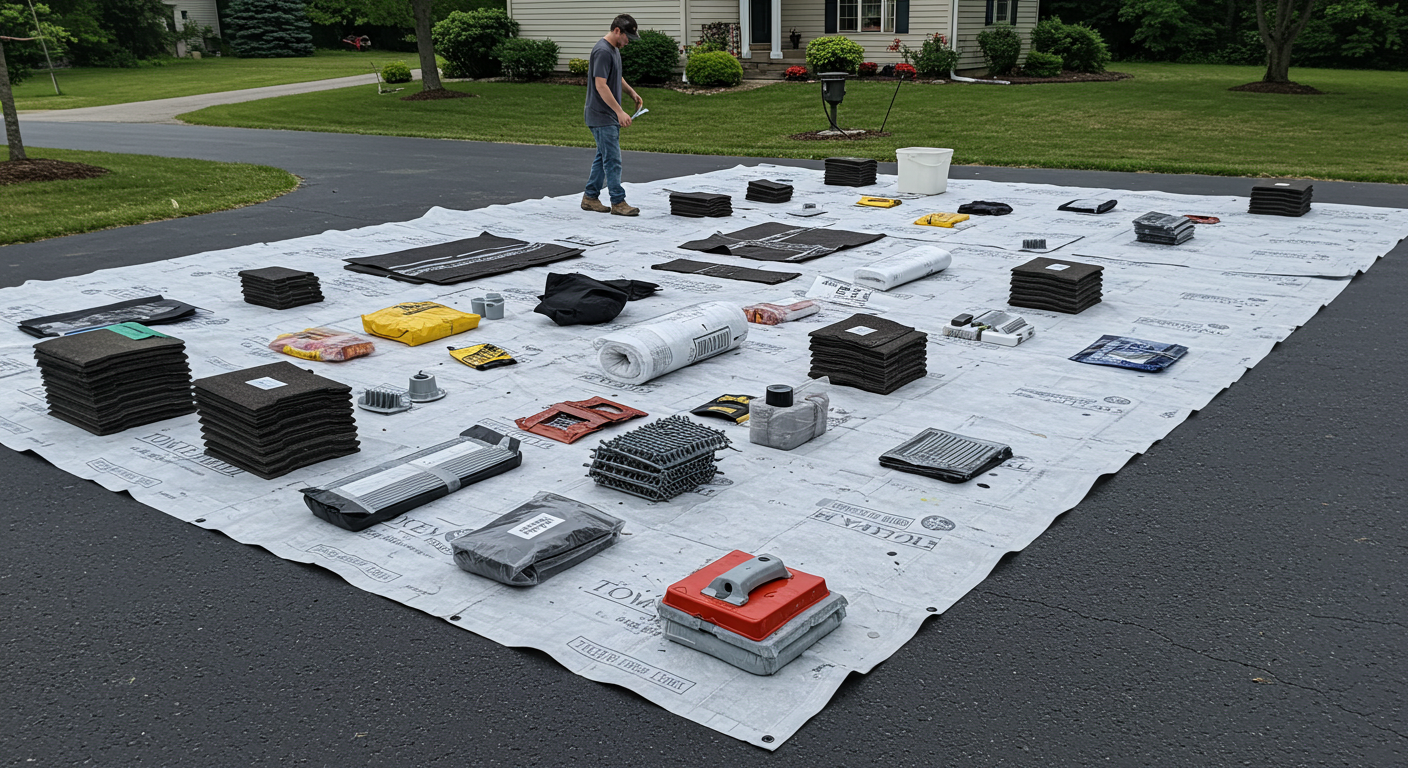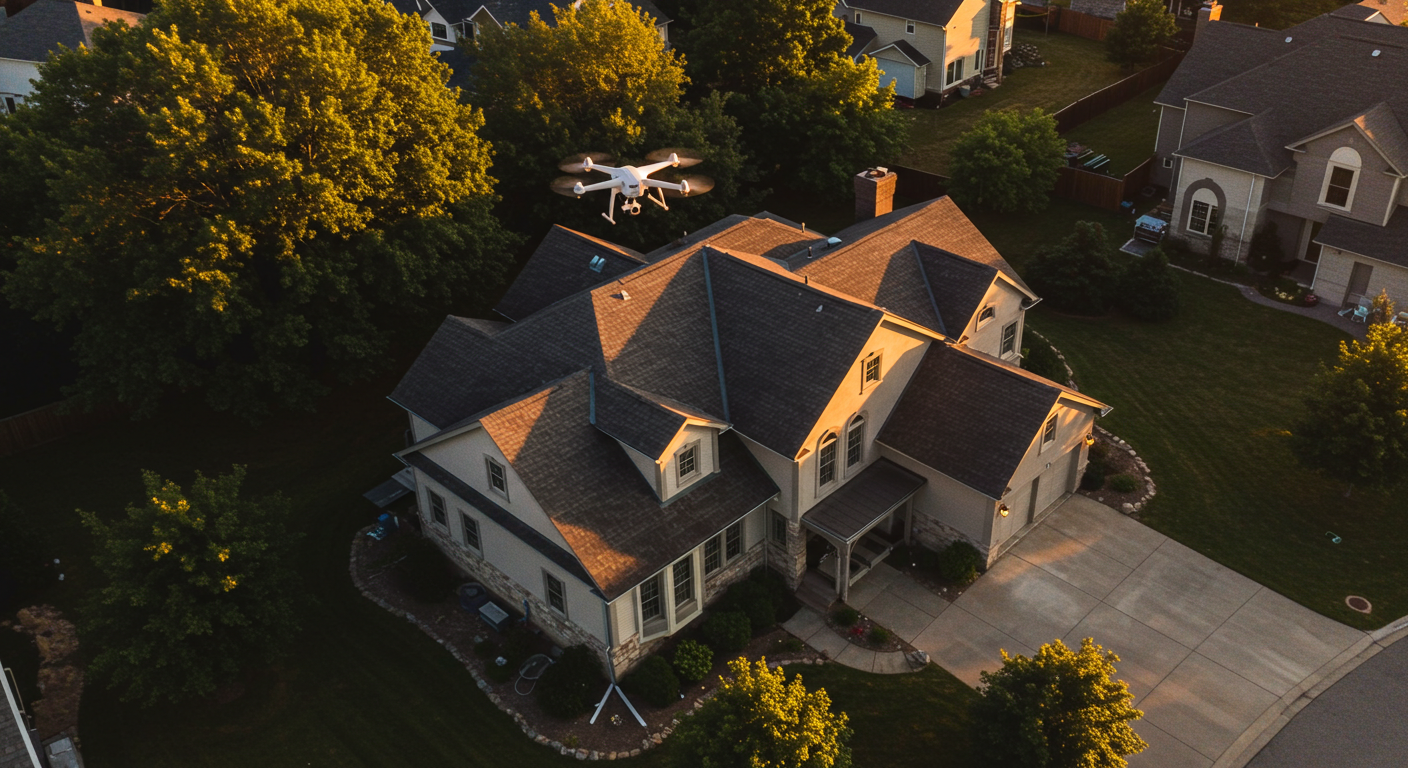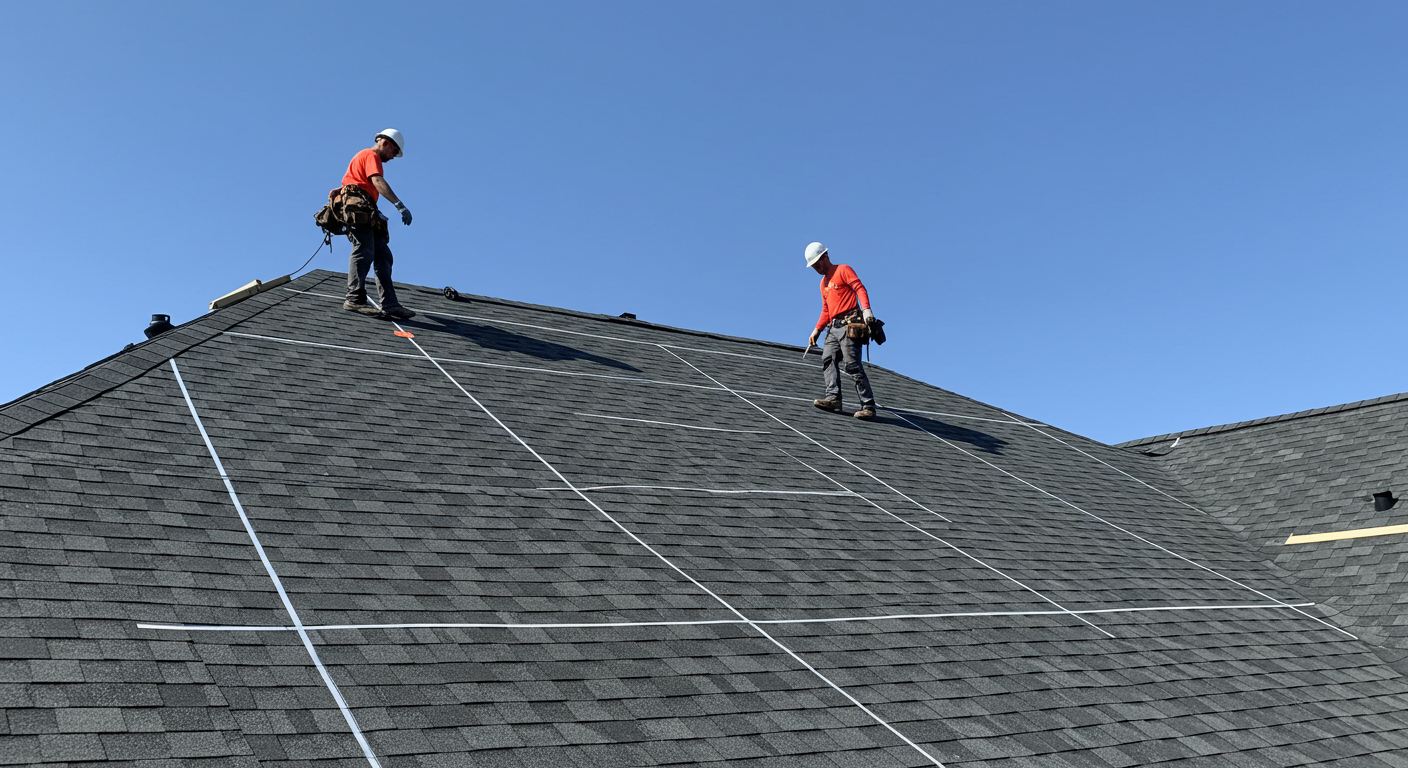When starting a roofing project, you’ll quickly encounter industry-specific terminology that might leave you scratching your head. One of the most fundamental yet potentially confusing terms is “square.”
Unlike the geometric shape we learned about in elementary school, a square in roofing represents a specific measurement unit that’s essential for estimating materials, calculating costs, and communicating with roofing professionals. Understanding this basic concept can save you time, money, and confusion when planning your next roofing project.
As the experts at Pickle Roofing Solutions know, being informed about roofing fundamentals helps homeowners make better decisions. In this comprehensive guide, we’ll explore everything you need to know about roofing squares, from their definition and significance to practical applications and cost implications.
Understand Roofing Squares to Simplify Planning and Costs
A square in roofing is a standardized unit of measurement that equals 100 square feet of roof area. This measurement standard has been used in the roofing industry for decades as a simplified way to calculate and communicate roof sizes.
Rather than discussing projects in terms of hundreds or thousands of square feet, contractors use squares as a more manageable unit. For example, if your roof measures 2,000 square feet in total, a roofing professional would describe it as a 20-square roof.
This standardization helps streamline everything from material orders to price quotes. The concept of a roofing square is unique to the industry and serves as a shorthand that allows for quick calculations and clear communication between suppliers, contractors, and customers.
When you receive an estimate from a professional roofing company like Pickle Roofing Solutions, the quote will typically break down costs per square rather than per square foot. Understanding this basic measurement unit is your first step toward speaking the language of roofing professionals and making informed decisions about your roofing project.
Use Roofing Squares to Estimate Materials and Budget Wisely
The use of squares in roofing isn’t just industry jargon; it serves several practical purposes that impact both contractors and homeowners:
First, squares simplify material calculations. Roofing materials like shingles are packaged and sold based on squares. For instance, standard asphalt shingles typically come in bundles, with three bundles covering one square. This standardization makes it easier to estimate how much material you’ll need for a project.
Second, squares provide a standard unit for pricing. When contractors bid on jobs, they often calculate costs per square foot, which includes materials and labor. This standardization allows for easier comparison between different contractors’ bids.
Third, using squares helps account for waste and overage. Professional roofers know that you can’t simply order the exact number of squares your roof measures. Factors like roof complexity, cutting requirements, and potential material damage during installation require ordering extra materials, typically 10-15% more than the measured area.
Finally, understanding squares helps homeowners better comprehend the scope and cost of their roofing project. When you know that your 30-square roof will require approximately 90 bundles of shingles, you gain valuable context for evaluating quotes and planning your budget.
Follow These Steps to Accurately Calculate Roof Squares
Calculating the number of squares on your roof involves measuring the roof’s total square footage and then converting that figure into squares. Here’s a step-by-step approach:
- Measure the length and width of each roof plane in feet
- Multiply the length by the width to get the square footage of each section
- Add the square footage of all sections together
- Divide the total square footage by 100 to convert to squares
For example, if your roof has four rectangular planes, each measuring 25 feet by 40 feet:
- Each plane is 25 × 40 = 1,000 square feet
- Four planes total 4,000 square feet
- 4,000 ÷ 100 = 40 squares
However, roof calculations can quickly become complicated with factors like:
Roof Pitch: Steeper roofs have more surface area than the simple footprint of the building suggests. A 6/12 pitch (meaning the roof rises 6 inches for every 12 inches of horizontal run) increases the actual roof area by about 20%.
Complex Designs: Features like dormers, valleys, and multiple levels require additional measurements and calculations.
Waste Factor: Most professionals add 10-15% to account for waste, overlaps, and damaged materials.
For accuracy, many homeowners rely on professional measurements. Experienced contractors from established companies like those featured on our blog, What Is Corrugated Metal Roofing? Everything You Need To Know, you can quickly assess your roof’s square footage and provide precise material estimates.
Know Material Needs Per Square to Plan Your Roofing Project

Understanding how roofing materials relate to squares helps you better plan and budget for your project. Different roofing materials have varying coverage rates per square:
Asphalt Shingles: The most common residential roofing material in North America, asphalt shingles typically come in bundles. Standard three-tab shingles require 3 bundles to cover one square, while heavier architectural shingles might require 4-5 bundles per square.
Metal Roofing: Metal panels are often sold by the linear foot but are calculated to cover specific square footage. Most metal roofing systems require special attention to overlaps, which affects the total material needed per square.
Wood Shingles/Shakes: These natural materials generally require 4 bundles to cover one square, but the exact amount depends on the size and exposure of the shingles.
Tile and Slate: These premium materials have specific coverage rates based on their size and required overlap. Concrete tiles typically require 80-100 tiles per square, while slate might require 150-200 individual pieces per square.
Beyond the primary roofing material, each square also requires:
- Underlayment (felt paper or synthetic)
- Ice and water shield (for vulnerable areas)
- Flashing materials
- Fasteners (nails or screws)
- Ridge caps and other accessories
Professional roofers factor all these components when calculating materials needed for your project. As the experts at our blog, What Does GAF Stand For In Roofing?, can attest, using quality materials in the right quantities is essential for a long-lasting roof.
Factor in Roofing Squares to Understand Total Project Costs
The number of squares on your roof directly impacts your project’s overall cost. Roofing contractors typically price their services per square, with the rate varying based on several factors:
- Material Type: The cost per square varies dramatically depending on your chosen roofing material:
- Asphalt shingles: $100-$400 per square
- Metal roofing: $300-$1,200 per square
- Wood shakes: $400-$900 per square
- Clay/concrete tile: $500-$1,500 per square
- Slate: $800-$2,000+ per square
- Removal Costs: If your project includes removing old roofing materials, this typically adds $100-$150 per square to the total cost.
- Roof Complexity: Roofs with multiple planes, steep pitches, or numerous features like skylights and chimneys increase labor costs per square.
- Geographic Location: Labor rates vary by region, affecting the overall price per square.
- Seasonal Factors: Roofing costs often fluctuate based on demand, with peak season (typically summer) commanding premium prices.
A significant advantage of understanding squares is that you can better evaluate roofing quotes. When contractors provide estimates, they should break down costs per square foot, allowing you to compare bids more effectively.
For example, if one contractor quotes $350 per square for architectural shingles while another quotes $275, you can ask specific questions about the material quality, warranty coverage, and installation methods to determine which represents the better value.
Avoid Common Mistakes When Calculating Roof Squares
Even experienced DIYers can make mistakes when calculating roof squares. Here are some common pitfalls to avoid:
Ignoring Roof Pitch
The most frequent error is measuring only the building’s footprint without accounting for the roof’s pitch. A steeper roof has significantly more surface area than a flat one with the same footprint. The following pitch multipliers should be applied to get accurate measurements:
- 4/12 Pitch: multiply by 1.054
- 6/12 Pitch: multiply by 1.118
- 8/12 Pitch: multiply by 1.202
- 10/12 Pitch: multiply by 1.302
- 12/12 Pitch: multiply by 1.414
Forgetting About Waste
Another common mistake is ordering exactly the number of squares calculated. Professional roofers always factor in waste, typically adding:
- 5-10% for simple gable roofs
- 12-15% for more complex designs with valleys and dormers
- 15-20% for intricate roofs with multiple features
Overlooking Non-Standard Areas
Dormers, chimney crickets, skylights, and other features require special attention. These areas often need custom cutting and flashing, increasing both the waste factor and the skill required for installation.
Miscalculating Material Conversions
Different materials cover squares at different rates. Misunderstanding how many bundles of shingles or panels of metal you need per square can lead to significant ordering errors. To avoid these pitfalls, many homeowners wisely choose to work with established roofing professionals who have the experience and tools to measure accurately.
Today’s professional roofers often use sophisticated software and even drone technology to precisely calculate roof dimensions and material requirements.
Compare DIY and Professional Roofing Square Estimates

When it comes to measuring your roof’s squares, you have two options: do it yourself or hire a professional. Each approach has its advantages and limitations.
DIY Measurement Methods:
The ground measurement method involves measuring your home’s footprint and applying pitch multipliers. This approach requires only basic tools:
- Tape measure
- Calculator
- Knowledge of your roof’s pitch
- Safety awareness (avoiding power lines)
The attic measurement method provides more accuracy by measuring in the attic where the roof meets the floor. This requires:
- Access to an unfinished attic
- Good lighting
- Measuring tape
- Knowledge of roof framing
Professional Measurement Methods:
Professional roofers use several advanced techniques:
Aerial measurements using satellite imagery or drone photography provide precise dimensions without climbing on the roof. This technology has revolutionized the accuracy of roofing estimates.
Software programs designed specifically for roofing calculations can account for all roof features, pitch variations, and material specifications.
Physical roof inspections, where experienced professionals take detailed measurements directly on the roof, remain the gold standard for complex projects.
The primary benefits of professional measurements include:
- Greater accuracy (typically within 2-5%)
- Comprehensive material lists
- Identification of potential installation challenges
- Time savings for homeowners
While DIY measurements might save money initially, errors can lead to significant additional costs later. Most reputable roofing companies, including those featured on our blogs, offer free roof measurements and estimates as part of their service.
Frequently Asked Questions
How many bundles of shingles do I need per square?
For standard three-tab asphalt shingles, you typically need 3 bundles to cover one square (100 square feet). However, heavier architectural or dimensional shingles often require 4-5 bundles per square due to their thicker construction.
Always check the manufacturer’s specifications, as coverage rates can vary between brands and product lines. Remember to factor in an additional 10-15% for waste, particularly on complex roofs with multiple angles and features.
Does roof pitch affect the number of squares?
Yes, roof pitch significantly impacts the number of squares. A steeper roof has more surface area than a flatter roof with the same footprint. For example, a house with a 1,500 square foot footprint might have exactly 15 squares if it were flat.
However, with a 6/12 pitch, the actual roof area increases to about 16.8 squares (1,680 square feet). Professional roofers use pitch multipliers to calculate the true roof area based on the slope.
How do I convert roof squares to bundles of shingles?
To convert roof squares to bundles of shingles, multiply the number of squares by the number of bundles required per square for your specific shingle type. For example, if you have a 20-square roof using three-tab shingles (3 bundles per square), you would need 60 bundles (20 × 3 = 60).
For architectural shingles requiring 4 bundles per square, the same 20-square roof would need 80 bundles (20 × 4 = 80). Always add 10-15% for waste and damage during installation.
Why do roofing contractors use squares instead of square feet?
Roofing contractors use squares instead of square feet for several practical reasons. First, it simplifies calculations and communication; it’s easier to discuss a 25-square-foot roof than a 2,500-square-foot roof. Second, roofing materials are packaged and sold based on squares, making material ordering more straightforward.
Third, the square has become the industry standard for pricing, allowing for more consistent estimating and easier comparison between contractors. This standardized approach benefits both professionals and customers by streamlining the entire roofing process.
Can I measure roof squares without climbing on my roof?
Yes, you can measure roof squares without climbing on your roof using several methods. The simplest approach is to measure your home’s footprint from the ground and apply a pitch multiplier.
More accurate methods include taking measurements from inside an unfinished attic or using aerial measurement services that utilize satellite imagery or drone photography. Many professional roofing companies now offer free digital roof measurements using specialized software that provides precise calculations without requiring anyone to physically climb on the roof.
Plan Smarter With a Clear Understanding of Roofing Squares

Understanding what a square is in roofing, 100 square feet of roof area, provides you with essential knowledge for your roofing project. This industry-standard measurement helps simplify material calculations, standardize pricing, and facilitate clear communication between homeowners and contractors.
Whether you’re replacing an aging roof or installing a new one, this knowledge empowers you to make informed decisions. For personalized guidance on your specific roofing project, consider consulting with experienced professionals who can provide accurate measurements and quality craftsmanship.
About Pickle Roofing Solutions
Pickle Roofing Solutions is a trusted roofing contractor with over 15 years of experience in residential and commercial roofing. Our certified team brings deep expertise in all roofing systems, including asphalt shingles, metal, tile, and flat roofs. We handle inspections, repairs, replacements, and storm restoration tailored to the demanding climate of Texas.
Our installers follow the latest techniques and always meet manufacturer specs to ensure long-lasting results. We’re known for our attention to detail, fair square-based pricing, and use of high-quality materials. Thousands of homeowners have relied on us to simplify roofing projects and guide them through complex insurance claims.Contact us today to discuss how our roofing expertise can help you protect your home with a durable, beautiful roof. Schedule a consultation to learn more about our precise square-based estimating process and how we’ve helped clients achieve long-lasting roofing solutions that stand up to Texas weather conditions.

